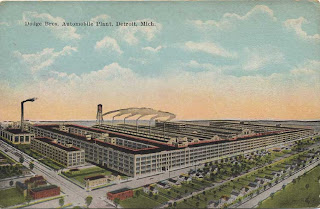Two current exhibitions just a few blocks from each
other in lower Manhattan
involve the actions of printed matter in the information age. Boo-Hooray on Canal Street is devoted to The
Situationist Times, a self-published journal designed in the
mid-1960s by Dutch artist Jacqueline
de Jong.
The Storefront for Art
& Architecture on Lafayette and Kenmare consists of two
conjoined exhibits: Arch-i-zine, 80 samples of “alternative and independent”
architectural publications, and Arch-Art!,
which features 70 seventy artists’ books that “mine the overlap and friction”
between architecture and art publishing.
The
Situationist Times ran for six issues between 1962 and 1967. The exhibit focuses on de Jong's work as an artist rather than provocateuse, with
samples of artwork, issues and contributions.
Though claiming to be aligned with the radical Situationist movement, de
Jong’s journal was decried by the Situationist International as “vacuous” and which
“has the peculiarity that it is ‘situationist’ only in the sense that it is
directed against the SI, its flock of occasional collaborators never having
been (nor even claiming to have been) situationists.” De Jong is debunked as having “passed
eighteen months in the SI and talks about it incessantly.”
 |
| Situationist International. |
The Situationists were argumentative, incendiary,
reactionary, polemic and contrarian. Factions broke loose and
members attacked one another out loud and in print. Poet Attila Kotanyi suggests
the paradox in the opening lines of his “Gangland and Philosophy":
“The situationist tendency is not aimed at
preventing the construction of situations. This first restriction in our
attitude has numerous consequences. We are striving to provoke the development of
these consequences.”
The neighborhood of the Storefront for Art and
Architecture fits a psychogeographical
sense. Kenmare St. and Lafayette may be in NoLita,
or Little Italy, and two blocks is the Soho
Solita Hotel, on the edge of Chinatown. The Storefront art space itself conforms to
the layout of the Flatiron
Building on 23rd
and Fifth Ave. The location is “Situationological.”
 |
| Tribeca Tavern & Soho Pharmacy, on West Broadway & Beach Street. |
Storefront’s 150 books and zines are thematically bound
by “architecture,” yet the exhibit is less concerned with the subject than with
the venue of ideas about the subject, which is the industry of non-mainstream
printed matter. An accompanying broadsheet details a rich annex that sums up the gist of each zine with corresponding web
address. It is noted that the print
publications are an extension of the website or vice versa, with samples here and here and here. There is a multi-disciplinary,
free-association of “land use,” “built spaces,” “the unequal distribution of
environmental risks and benefits,” “romantic geography,” as well as various
re-animations of policy, theory, public works and urbanism. Most of the architecture involves city spaces
over rural.
There is a cursory, mingling aspect to the
Storefront exhibit. One can hardly
ingest it all and is not asked to. The
impressive range and format finds a point of entry by the psychological modes of collage. It
is an evocative medley. I used to work
at Alabaster Bookshop on Fourth
Avenue, and our cabinet behind the desk was filled
with arty pamphlets and small press works from the last 125 years, in which the
Storefront materials would easily find home.
One time Thurston Moore from Sonic Youth came in and asked for
“mimeo-graphed poetry,” and I eagerly directed him to the collection. Disappointingly, Thurston didn't buy anything.
The Storefront agenda is artistic over political and
several of the zines are the result of projects conducted by university
students. Locales represented in the
collection include Scandinavia, East Africa, Western Europe,
Australia and North America. The
zines describe themselves in the the annex as seeking to encourage discourse
and awareness. The artists and editors
and thinkers and students behind these publications are not so much radical
activists or political advocates other than the status of “non-mainstream.” In the “information age,” the "mainstream"
suggests a power structure enabled by greater mass-production and fewer
independent ideas. Storefront maintains
a sort of archival objectivity in the scope and non-hermeneutic of the
assemblage. Some of the zine descriptions
read as more ambitious and catchy than the actual content, but it is inspiring to know that such an ongoing proliferation of work exists.
 |
| One World Trade, construction site. |
Public
space and private interest are surely ripe topics. When eminent domain was enforced in
West Harlem so that Columbia
University could expand
north and build new facilities and occupy old buildings, there was naturally an
uproar. The area was a last remnant of
industrial Manhattan,
with the Studebaker factory long turned over to commercial space, and a
Dinosaur BBQ down the block. Bus depots
and factories no longer find home there, except for the Madame
Alexander doll factory, which is also a stop on the double-decker tour bus. Two blocks away is a 1920s replica of the old
whites-only Cotton Club.
 |
| West Harlem, construction site. |
The
neighborhood could have easily tilted towards a Times
Square redux, so why not favor education over chintzy
entertainment or luxury hi-rises. It is a Situationistic
predicament.
While in its day The Situationist Times strove to be original and subversive, Arch-i-zine and Arch-Art! pay deliberate
homage to the analog and handable "little magazines phenomenon in the 60’s and 70’s." The Situationists fashioned themselves as
unprecedented railers against the
bourgeoise yet nodded to Marxist tradition and harked back to earlier anti-establishment
movements like the Surrealists of the 1920s or Vorticists of the prior
aughts.
The two exhibits find kinship in
the display of what book objects might mean, and surely call to mind the Occupy
Wall Street movement, having opened around the time of the May Day marches when
the architecture and open spaces of New
York were re-mapped as a staging
ground of unrest, populism and outcry against the “mainstream.”















